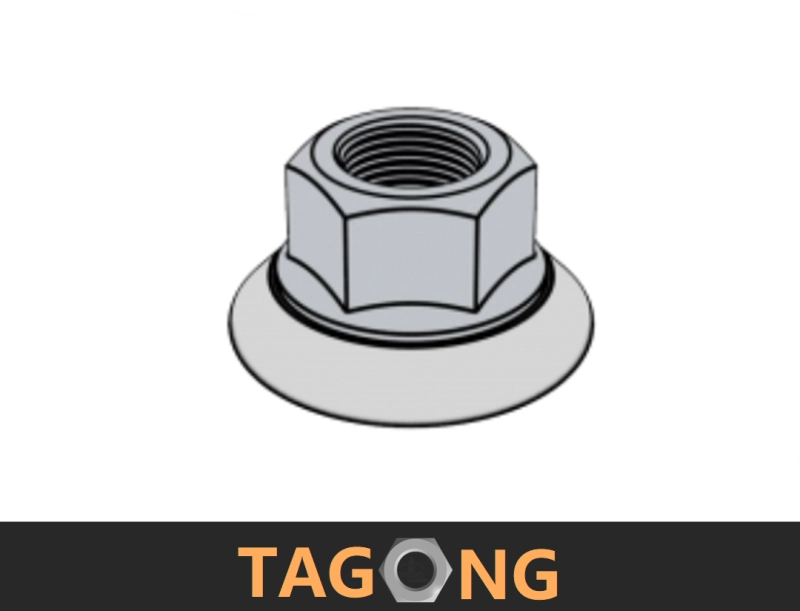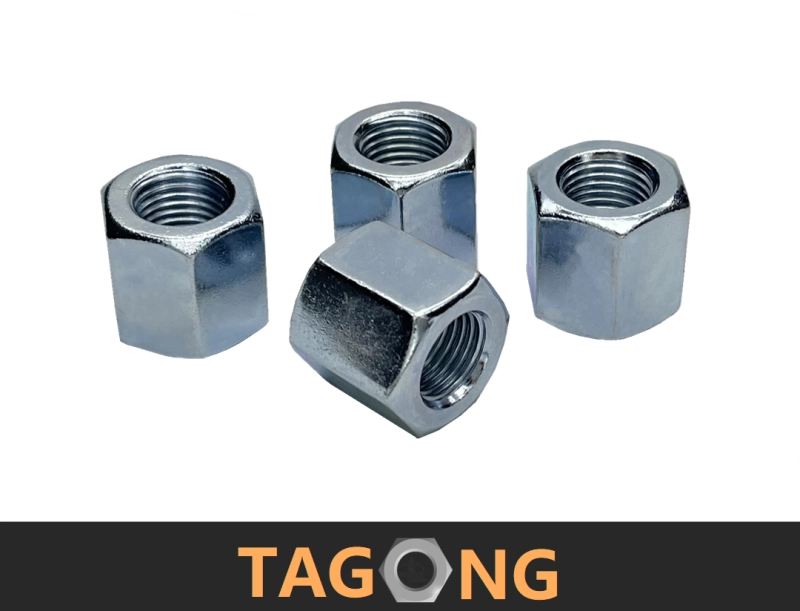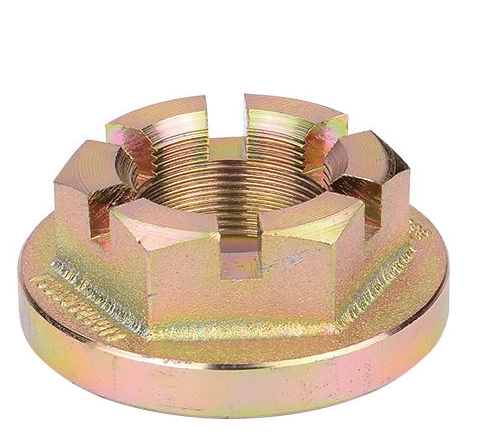With over 38 years of experience, TAGONG is the expert in manufacturing standard fasteners and special fasteners
+86 15160779301
+86 18906098857
The Environmental Impact of Using Yellow Zinc Coated Fasteners: A Comprehensive Analysis
2025-07-05
The Environmental Impact of Using Yellow Zinc Coated Fasteners
Introduction to Yellow Zinc Coated Fasteners
In the world of industrial equipment and components, **fasteners** play a critical role. Among these, **yellow zinc coated fasteners** are widely utilized due to their enhanced corrosion resistance and aesthetic appeal. However, the environmental impact associated with their production and use raises important questions. This article delves into the environmental implications of yellow zinc coated fasteners, analyzing both their benefits and the challenges they pose.
Understanding Yellow Zinc Coating
What is Yellow Zinc Coating?
Yellow zinc coating is a process used to protect steel fasteners from corrosion. The coating is achieved through an electroplating process that deposits a thin layer of zinc onto the surface of the fastener. This method not only enhances durability but also provides an appealing yellow hue, making it favorable for various applications.
Benefits of Yellow Zinc Coated Fasteners
Yellow zinc coated fasteners offer several advantages, including:
- **Corrosion Resistance**: The coating provides a protective barrier against oxidization and environmental factors, prolonging the lifespan of the fasteners.
- **Aesthetic Appeal**: The vibrant yellow finish enhances the visual quality of fasteners, making them suitable for visible applications.
- **Improved Performance**: Yellow zinc coatings can improve the performance of fasteners in harsh environments by reducing wear and tear.
Environmental Concerns Related to Yellow Zinc Coated Fasteners
The Production Process and Its Impact
While yellow zinc coated fasteners provide significant benefits, the production process can have a considerable environmental footprint. The primary concerns include:
- **Chemical Use**: The electroplating process involves various chemicals, including **cyanide**, which can be harmful to both workers and the environment if not handled properly.
- **Waste Generation**: The manufacturing process generates waste materials that need to be managed effectively to prevent pollution.
Potential Leaching and Soil Contamination
The leaching of zinc into the soil and water bodies poses a risk to ecosystems. Over time, zinc can accumulate in the environment, leading to toxicity in plants and aquatic life. Understanding how yellow zinc coated fasteners can impact local ecosystems is crucial for making informed decisions about their use.
Sustainable Alternatives to Yellow Zinc Coated Fasteners
Exploring Eco-Friendly Fastening Solutions
To mitigate the environmental impact, various **sustainable alternatives** to yellow zinc coated fasteners have emerged. These include:
- **Organic Coatings**: Utilizing organic coatings can reduce the reliance on toxic chemicals, providing a more environmentally friendly option.
- **Stainless Steel Fasteners**: Stainless steel offers excellent corrosion resistance without the need for additional coatings, making it a sustainable choice.
- **Biodegradable Fasteners**: Innovations in materials science have led to the development of fasteners made from biodegradable materials, reducing the overall environmental footprint.
Recycling and Reusability
The lifecycle of fasteners should also be considered. **Recycling** yellow zinc coated fasteners can significantly reduce waste, and promoting reusability in manufacturing processes can further diminish their environmental impact. Encouraging industries to adopt circular economy practices will prove beneficial.
Regulatory Standards and Compliance
The Role of Environmental Regulations
Governments worldwide have established regulations to minimize the environmental impact of industrial processes, including the use of yellow zinc coatings. Understanding these regulations is vital for manufacturers to ensure compliance and promote sustainability.
- **REACH Compliance**: In Europe, regulations like REACH (Registration, Evaluation, Authorisation and Restriction of Chemicals) govern the use of hazardous substances, impacting the production of yellow zinc coated fasteners.
- **EPA Standards**: In the United States, the Environmental Protection Agency (EPA) outlines guidelines for managing hazardous waste and reducing environmental risks associated with industrial processes.
Strategies for Compliance and Sustainability
Manufacturers can adopt various strategies to comply with regulations while promoting sustainability:
- **Investing in Cleaner Technologies**: Transitioning to safer, cleaner technologies can minimize chemical exposure and waste generation.
- **Employee Training Programs**: Training employees on environmental management and safety protocols can help reduce risks and promote sustainable practices.
Cost-Benefit Analysis of Yellow Zinc Coated Fasteners
Evaluating Economic Factors
While yellow zinc coated fasteners offer advantages such as durability and corrosion resistance, it's essential to analyze the economic factors involved in their use:
- **Initial Costs**: The upfront cost of yellow zinc coated fasteners can be higher than some alternatives. However, their longevity can lead to cost savings over time.
- **Potential Liability**: The risk of environmental contamination can expose companies to legal and financial liabilities, making it crucial to weigh these factors in decision-making.
Long-Term Benefits of Sustainable Practices
Investing in sustainable practices can yield long-term benefits for both the environment and the bottom line. Companies that prioritize sustainability can enhance their brand reputation, attract eco-conscious customers, and potentially increase profitability.
Best Practices for Using Yellow Zinc Coated Fasteners
Guidelines for Responsible Use
To minimize the environmental impact of yellow zinc coated fasteners, consider the following best practices:
- **Sourcing Ethically**: Choose suppliers committed to sustainable practices and compliant with environmental regulations.
- **Using the Right Fasteners**: Assess whether yellow zinc coated fasteners are necessary for your application or if an alternative would suffice.
- **Proper Disposal**: Ensure that yellow zinc coated fasteners are disposed of in accordance with local regulations to prevent environmental contamination.
Innovations in Fastener Technology
Keeping up with advancements in fastener technology can lead to more sustainable options in the future. Innovations such as **coating technologies** that reduce harmful emissions and improve recycling capabilities are continually being developed.
Conclusion
In conclusion, while yellow zinc coated fasteners provide significant advantages, their environmental impact cannot be overlooked. Understanding their production process, potential risks, and exploring sustainable alternatives is crucial for making informed choices. By emphasizing responsible sourcing, compliance with regulations, and investing in innovative technologies, industries can mitigate the environmental consequences of yellow zinc coated fasteners. As we move toward a more sustainable future, it’s essential to prioritize practices that protect our planet while meeting our industrial needs.
FAQs
1. What is the main environmental concern with yellow zinc coated fasteners?
The primary concern is the potential leaching of zinc into soil and water, which can lead to pollution and toxicity in ecosystems.
2. Are there sustainable alternatives to yellow zinc coated fasteners?
Yes, alternatives include organic coatings, stainless steel fasteners, and biodegradable fasteners that minimize environmental impact.
3. How can companies ensure compliance with environmental regulations?
Companies can ensure compliance by understanding relevant regulations, investing in cleaner technologies, and implementing employee training programs.
4. What are the economic benefits of using yellow zinc coated fasteners?
The long-term durability of yellow zinc coated fasteners can lead to cost savings, although initial costs may be higher compared to some alternatives.
5. How can we promote recycling of yellow zinc coated fasteners?
Promoting recycling can be achieved by establishing partnerships with recycling facilities and encouraging companies to adopt circular economy practices.
Yellow Zinc Nuts DIN74361 Auto Parts
RELEVANT INFORMATION
The Environmental Impact of Using Yellow Zinc Coated Fasteners: A Comprehensive Analysis
The Environmental Impact of Using Yellow Zinc Coated Fasteners
Introduction to Yellow Zinc Coated Fasteners
In the world of industrial equipment and components, **fasteners** play a critical role. Among these, **yellow zinc coated fasteners** are widely utilized due to their enhanced corrosion resistance and aesthetic appeal. However, the environmental impact associated with their production and u
2025-07-05
Understanding DIN6330 Hex Coupling Nuts: Essential Components for Secure Connections
DIN6330 Hex Coupling Nuts are specialized fasteners designed to connect two male-threaded components, typically rods or bolts, in a secure manner. These nuts are characterized by their hexagonal shape, which allows for easy tightening and loosening with standard wrenches or sockets. Made from various materials, including steel, stainless steel, and other alloys, DIN6330 Hex Coupling Nuts are engin
2025-07-02
Troubleshooting Common Issues with DIN937 Yellow Zinc M24 Truck Nuts: A Comprehensive Guide
Troubleshooting Common Issues with DIN937 Yellow Zinc M24 Truck Nuts
Table of Contents
1. Introduction to DIN937 Yellow Zinc M24 Truck Nuts
2. Common Issues with Truck Nuts
2.1 Rust and Corrosion
2.2 Stripped Threads
2.3 Improper Installation
3. Troubleshooting Techniques
3.1 Inspecting the Nuts
3.2
2025-06-29




